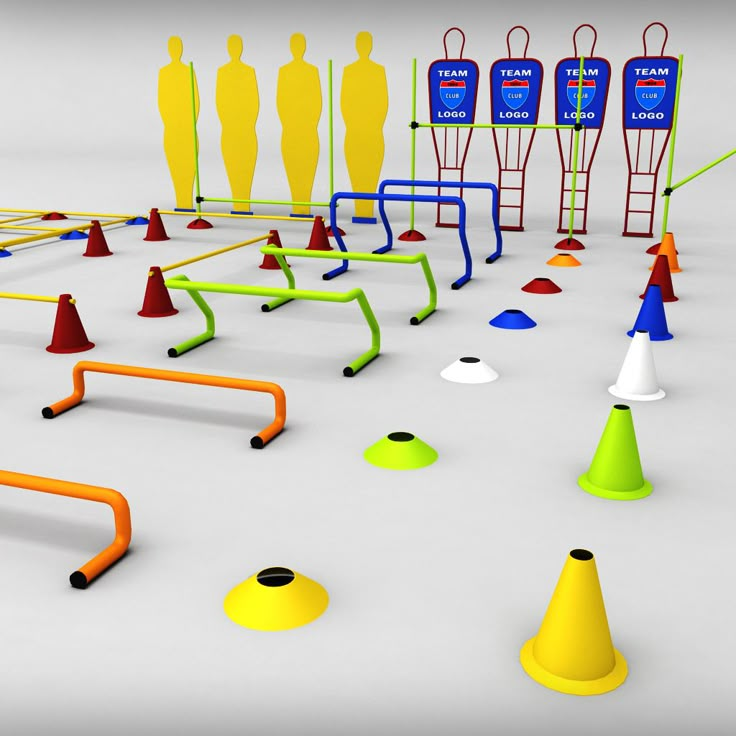Tips to Save on Sports Training Equipment
By Halie Johnson | Published on May 20, 2025 | Estimated 6 min read

Ever get excited about starting a new sports training routine, only to feel your enthusiasm fade away once you glimpse the hefty price tags on training gear? You're not alone. Many athletes—from weekend hobbyists to serious competitors—struggle with balancing the desire for quality equipment against the reality of a tight budget. But here's the good news: with a bit of creativity, smart shopping, and resourcefulness, you can equip yourself thoroughly without draining your wallet.
Ready to level up your fitness routine without breaking the bank? Let's dive into practical tips and smart strategies to get great deals on sports training equipment!
Understanding the Types of Sports Training Equipment
To kick things off, understanding the different categories of sports training equipment is an essential first step. Knowing what you're precisely looking for helps you avoid unnecessary expenses.
Strength Training Equipment
Strength training gear typically includes free weights, kettlebells, resistance bands, weight benches, and weight machines. If your primary goal is building muscle, look closely at what type of strength equipment best suits your objectives and available space.
Cardio Equipment
Cardio machines, such as treadmills, stationary bikes, rowers, and ellipticals, are often pricier. Understanding your fitness goals and frequency of use can help you pick which cardio equipment offers maximum value. Remember, inexpensive options like jump ropes or basic aerobic step platforms can still deliver a powerful cardiovascular workout!
Agility and Functional Training Equipment
Designed for improving speed, balance, and coordination, agility equipment includes items like ladders, hurdles, cones, and training balls. Often more affordable, these tools can make training sessions versatile without costing a lot.
Researching and Comparing Prices
Every savvy shopper knows the value of taking some extra time to hunt for the best deals. Sports gear is no exception. Here's how you can start:
Utilize Price Comparison Websites
Online price comparison platforms like Google Shopping or PriceGrabber can quickly show you multiple prices for the same item across various retailers. These tools help you pinpoint the lowest price and avoid overpaying.
Check for Discounts and Promotions
Big retailers and sports equipment brands regularly run unlimited-time promotions, particularly around holidays. Keeping track of sales from well-established stores like Nike, Decathlon, Dick’s Sporting Goods, or Amazon ensures you purchase quality gear at reduced prices.
"I recently bought a high-quality kettlebell at half-off during a Black Friday sale—I waited just a couple extra weeks, but saved a ton!" – Sarah L., avid fitness enthusiast
Buying Secondhand or Pre-owned Equipment
Secondhand sports equipment is a fantastic, budget-friendly option you shouldn't overlook. Many sports enthusiasts sell barely-used gear when they upgrade or lose interest, offering exceptional quality at a fraction of a new item's price.
Inspect Equipment for Wear and Tear Carefully
When buying pre-owned equipment, make sure you perform a thorough inspection. Check mechanical parts, look for rust or damages, and test equipment for safety purposes. For instance, on a used stationary bike, verify that pedals, resistance levels, and digital displays function correctly before purchasing.
Find Reliable Sources for Secondhand Equipment
Facebook Marketplace, Craigslist, OfferUp, and dedicated second-hand sports equipment stores are excellent resources. Buying from sellers with positive reviews or reputable stores like Play It Again Sports (USA) adds an extra layer of confidence and security to your purchase.
Utilizing DIY and Homemade Equipment
If you're feeling crafty, creating your own sports gear is a satisfying and cost-effective solution. Here are some simple examples you can try today:
DIY Agility Hurdles
Agility hurdles can be built by repurposing PVC pipes from your local hardware shop. They're adjustable, sturdy, and affordable. Creating DIY hurdles is perfect for aspiring soccer or basketball players working on speed and agility at home.
Homemade Free Weights
You don't need fancy dumbbells right away. Filling plastic bottles with water or sand, sealing them tightly, and using them as homemade dumbbells can be fantastic for basic strength training exercises like curls, overhead presses, or shoulder raises.
"When gyms closed during lockdown, I made my own sandbag with some duct tape and an old backpack. It turned out to be the most versatile piece of gear I've ever had!" – Tom P., CrossFit athlete
Subscribing to Newsletters and Online Retailers
Signing up for email newsletters or loyalty programs from your favorite sports retailers can unlock significant savings, especially if you're in the market for new gear regularly.
Benefits of Being a Loyal Customer
Retailers frequently send exclusive coupons, early access to sales, or special promotions to their subscribers. These targeted offers help you stay informed and strategically plan your purchases, saving you money in the long run.
Exclusive Promotions for Subscribers
Many online retailers will offer you an instant discount by subscribing to their newsletter, typically ranging from 10–15%. These incentives provide an instant return for minimal effort.
Frequently Asked Questions (FAQs)
Is secondhand sports equipment reliable?
Absolutely, if you shop smartly. Always check thoroughly for damage, ensure all mechanical parts work correctly, and purchase from reputable sellers or stores.
Are DIY workouts equipment as effective as bought equipment?
Yes! DIY workout equipment can deliver excellent results, particularly for basic functional movements. Homemade gear can complement or temporarily substitute professional-grade equipment, depending on your needs and goals.
What equipment should beginners invest in first?
Generally speaking, beginners do well starting with minimal, multipurpose equipment such as resistance bands, jump ropes, or adjustable dumbbells. These items provide great versatility at an affordable cost.
Conclusion
Saving money on sports training equipment isn't about compromising on the quality of your training; it's about being resourceful, strategic, and open-minded. By carefully comparing prices, exploring secondhand options, embracing the world of DIY, and taking advantage of subscriber discounts, you can enjoy high-quality sports gear without financial stress.
Ultimately, it's your determination and consistent training that will produce incredible results—not how much you've spent. Happy training!
Got your own tips or DIY gear experiences to share? We'd love to hear them! Drop us a comment below or share this article with your workout buddies!
Maybe You're Interested In Shopping At These Stores
About the Author: Halie Johnson
Halie Johnson is a Marketing Manager and the founder of RetailReviewHub, where she combines over a decade of experience in affiliate marketing and deal hunting to help users save money with confidence. With a deep understanding of consumer behavior and pricing strategy, Halie is dedicated to writing clear, unbiased product reviews and sharing the best deals across the web. When she’s not digging through coupon databases or analyzing offer performance, she enjoys testing products first-hand and writing savings guides that actually work. Follow Halie on her journey to smarter shopping!
Related Posts

Top Independence Day Deals 2025 – Save Big with Verified Coupons at RetailReviewHub
Independence Day is a prime time for shoppers to find great discounts...

Score Explosive July 4th Discounts – Curated Offers on RetailReviewHub
Independence Day 2025 brings a great chance to save on many products w...